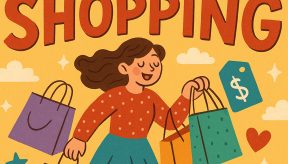Visibility does not automatically equal social progress.
Earlier in the summer, large franchises began to paint themselves and their products with the world’s most universal symbol of LGBTQ+ pride: the rainbow.
(Think: Facebook added a rainbow reaction button, and Skittles changed their vibrant packaging to plain old black and white–so as not to steal any “rainbow thunder”.)
It all seems well and good having big name brands paint themselves with the world’s most universal symbol for inclusivity. But is this proliferation of the rainbow symbol really the answer to the violence, oppression, and discrimination that still exists for the LGBTQ+ community?
I wanted to find out.
Increased Visibility Comes at a Price
Steven Bruhm is currently the Acting Vice Chair of the Department of English at Western University and has watched, and been a part of, the Pride movement from its infancy. He’s also studied, among other things, queer theories and why pop-culture is the way it is.
I asked Bruhm about his initial reaction to the corporate packaging changes for Pride. His overarching response: despair–but not for the reasons you may think.
“Corporate sponsorship can provide a lot of the money that otherwise wouldn’t be available, and that can make a lot of good things happen,” says Bruhm.
“The problem comes, I think, when corporations then get to dictate how things work, who is supposed to participate and who is disallowed. Now that Pride is marked by parades rather than marches, I get to stand on the sidelines, rather than walk in the street and watch corporations tell me how ‘proud’ they are to support ‘me’—so long as the ‘me’ has non-controversial views and cash in pocket.”
“[Product endorsements] rely upon a naive idea of who the people are that the icons are supposed to be supporting,” Bruhm explains.
“Acceptance always means acceptance on certain terms.”
And so, Bruhm wants us to resist the notion that more visibility automatically equals more social progress, which automatically equals a happy life.
“I think we do ourselves a real disservice if we assume that the more rainbow flags we get to see, the better.”
Professor Bruhm has a good point. If all allies do is react with the rainbow on Facebook, we’re merely supporting the slacktivism movement.
But The Flag’s Benefits Shouldn’t Be Dismissed
What about those who see an establishment with a rainbow flag in their window, and feel safe knowing their human rights are supported? Doesn’t visibility matter to them?
Max Denley, lead speaker for the organization/LGBTQ+ education movement Get REAL and LGBTQ+ community member, one hundred percent thinks so.
“I notice even the smallest of hints,” Denley says.
“Little rainbow flags on the door of a dentist’s office, pronouns on name tags of bookstore employees. When you’re feeling forgotten about or targeted by most of the world, you’re hyper-aware of any signs of acceptance. These are so important for our community.”
Denley says seeing the rainbow associated with any organization increases his initial respect for the company, and also raises his expectations for them to stand behind the rainbow and act accordingly.
“As terrible as it may seem, the general assumption is that a place will not be educated or accepting. If they are, that’s a bonus, but we prepare ourselves for the worst, to protect ourselves.”
This is the reality the LGBTQ+ people face, and the reason why I wanted to dig deeper into the sources of “support” displayed during Pride, to see if companies were in fact legitimate allies.
It’s Not All Slacktivism
As it turns out, I found a shred of hope for humanity.
The companies that are the most open about supporting the LGBTQ+ community are in fact working from the ground up.
For example, the Human Rights Campaign Foundation’s annual report card on LGBTQ+ employees scores businesses from 0-100 on whether or not they have policies that support LGBTQ+ employees. Companies from Starbucks, to Coca Cola, to Hershey, Mars (which owns Skittles), Apple, Google, Microsoft and Amazon all score within the 80+ range. (You can check out the entire index here.)
Visibility translating into action–this is what the LGBTQ+ community needs.
Denley explains how, throughout his journey, being unable to see himself represented resulted in a lack of belief in who he was. “When I was growing up,” Denley says, “I never saw any positive representation of my community in media. The only trans people I’d ever seen were men in dresses to be the punch lines of jokes, or people put on Jerry Springer to rip their wigs off and be laughed at.”
“While it would not have solved everything to see myself reflected in media, it would have been a start. The visibility has allowed people to be themselves so much sooner, and so much more frequently. But now we have to help those people be safe and equal in our society.”
Here’s How To Actually Support The LGBTQ+ Community
“If you truly want to be an ally, ask the LGBTQ+ people in your community what they need,” Denley advises.
“Do they need better access to jobs? Do they want to be correctly gendered in your space? Do they need financial support for their programs? Do they simply want awareness? The most impactful thing an ally can do is ask the community what it needs from them.”
In 2017, it is a sad reality that marginalized people are fed injustice like it’s breakfast cereal. That’s why it’s so important that allies to the LGBTQ+ community commit to listening and being open to learn. While the increase in rainbow flags is not a one-stop solution to the discrimination, violence, and hatred the LGBTQ+ community is facing, it is inarguable that six colours have never carried so much history and potential power to change the future.
*Opinions expressed are those of the author, and not necessarily those of Student Life Network or their partners.




